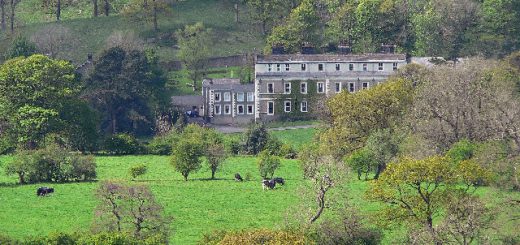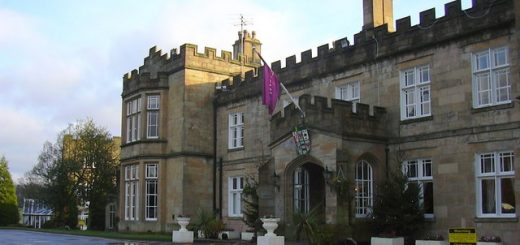Thornton Abbey
Not much remains of Thornton Abbey, once one of the largest monastic structures in the British Isles, but what does remain looks formidable and imposing. A few crumbling stone walls remain, but the largest and most impressive part is the 14th century abbey gatehouse, apparently the oldest red brick structures in Lincolnshire still standing.
![David Wright [CC BY-SA 2.0 (https://creativecommons.org/licenses/by-sa/2.0)]](http://www.mysteriousbritain.co.uk/wp/wp-content/uploads/2019/08/Thornton_Abbey_Ruins-300x225.jpg) There have been several mysteries regarding Thornton Abbey. A well-known mystery concerns the skeletal remains of a medieval priest which were discovered in a grave on the abbey grounds. From the gravestone we know that the priest’s name was Richard de W’Peton (believed to be a medieval contraction of Wispington, Lincolnshire) and that he died on April 17th 1317. The skeleton was discovered by archaeologists from the university of Sheffield, who noticed some very strange anomalies. Firstly, the skull had a wound which had been made by blunt force trauma to the back of the head, but which had healed many years before Richard’s death, and was probably not related to his eventual demise. Richard’s teeth also showed signs of dental enamel hypoplasia, which indicates that during childhood he had suffered badly from malnutrition. This could mean that, despite eventually going on to become an important man, Richard de W’Peton probably came from very humble origins. This is further evidenced by his bones showing the marks of robust muscle attachments, indicating that strenuous physical labour had once been a regular part of his life. Richard was aged between 35-45 years at his death, and given the date, it is thought that he could have fallen victim to the Great Famine, which swept Europe between 1315 and 1317.
There have been several mysteries regarding Thornton Abbey. A well-known mystery concerns the skeletal remains of a medieval priest which were discovered in a grave on the abbey grounds. From the gravestone we know that the priest’s name was Richard de W’Peton (believed to be a medieval contraction of Wispington, Lincolnshire) and that he died on April 17th 1317. The skeleton was discovered by archaeologists from the university of Sheffield, who noticed some very strange anomalies. Firstly, the skull had a wound which had been made by blunt force trauma to the back of the head, but which had healed many years before Richard’s death, and was probably not related to his eventual demise. Richard’s teeth also showed signs of dental enamel hypoplasia, which indicates that during childhood he had suffered badly from malnutrition. This could mean that, despite eventually going on to become an important man, Richard de W’Peton probably came from very humble origins. This is further evidenced by his bones showing the marks of robust muscle attachments, indicating that strenuous physical labour had once been a regular part of his life. Richard was aged between 35-45 years at his death, and given the date, it is thought that he could have fallen victim to the Great Famine, which swept Europe between 1315 and 1317.
![David Wright [CC BY-SA 2.0 (https://creativecommons.org/licenses/by-sa/2.0)]](http://www.mysteriousbritain.co.uk/wp/wp-content/uploads/2019/08/Thornton_Abbey_Gatehouse-300x225.jpg) The archaeologists also discovered a plague pit at the abbey, dating from the time of the Black Death (1346-1353). The pit contained 48 skeletons, both male and female adults and 27 children. This suggests the community was overwhelmed by the Black Death and was forced to resort to mass burials.
The archaeologists also discovered a plague pit at the abbey, dating from the time of the Black Death (1346-1353). The pit contained 48 skeletons, both male and female adults and 27 children. This suggests the community was overwhelmed by the Black Death and was forced to resort to mass burials.
Thornton Abbey is also said to be haunted by the ghost of a former abbot. Thomas de Gretham was the 14th Abbot of Thornton, and during his lifetime he was greatly feared by the local people. He was said to be a keen practitioner of the black arts and despite his position as an abbot, he was a keen seeker of pleasures of the flesh. The story goes that when his devilish ways were discovered, he was punished by being walled-up alive in the abbey dungeon. His sinister figure has been seen around the grounds of the abbey or standing in dark and dingy corners of the gatehouse.
In the 1830’s an excavation discovered a skeleton walled up in a secret underground room with a desk and chair, a book, ink and pen. Could this have been the remains of Thomas de Gretham?
By P A McHugh




Recent Comments